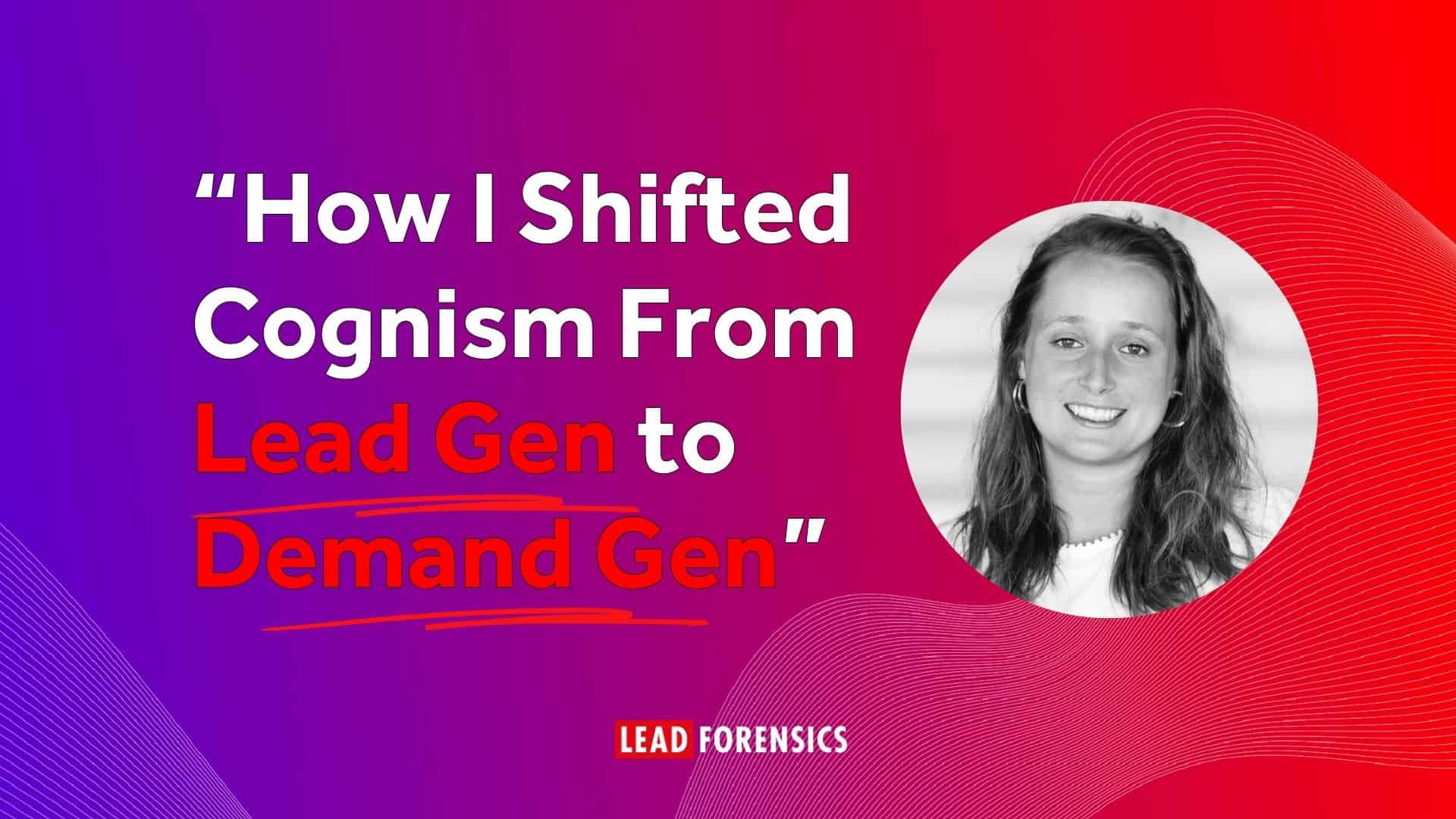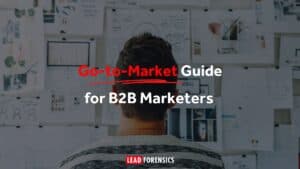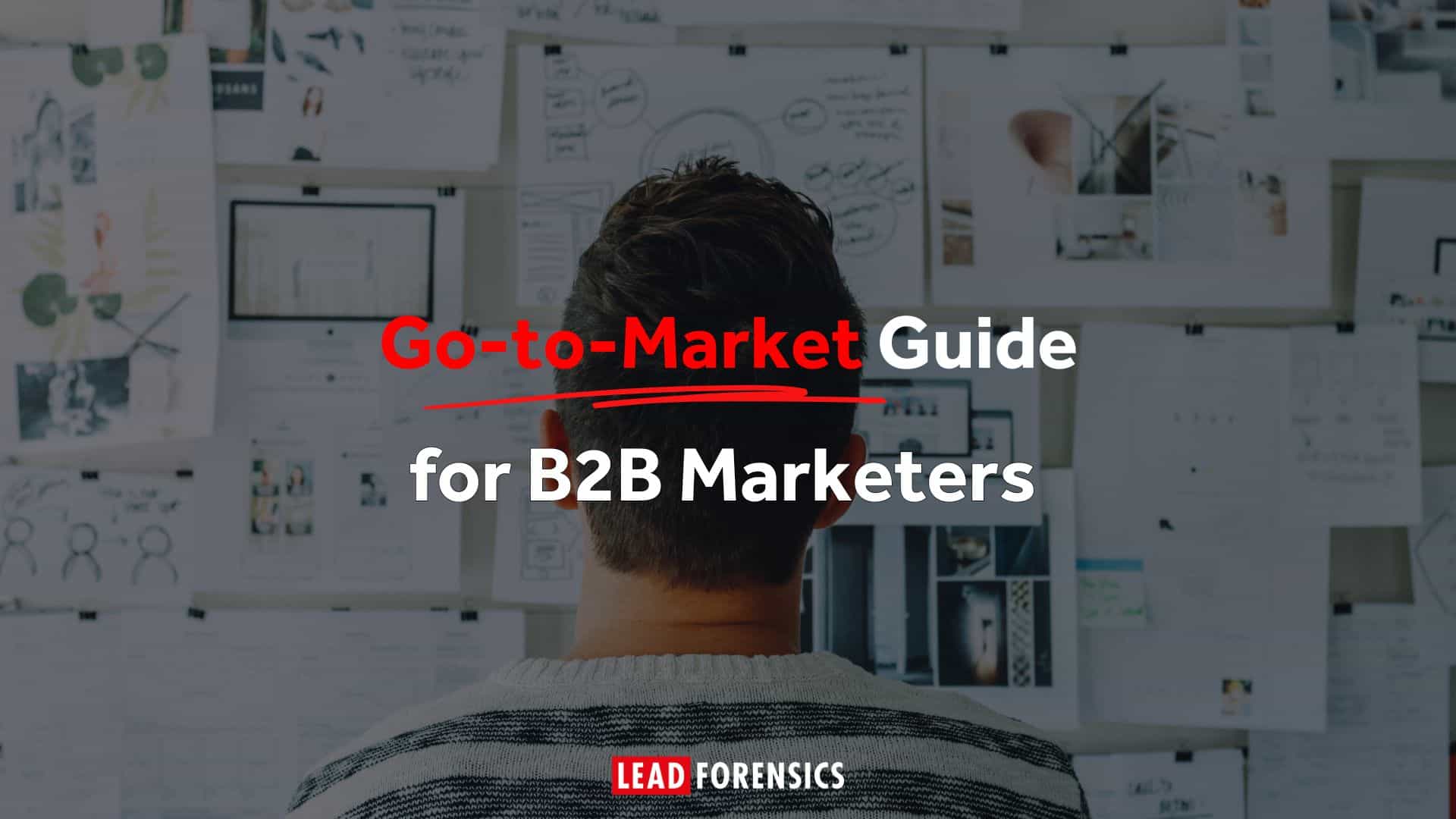According to Alice de Courcy, Group CMO at Cognism, switching to demand generation builds you a more efficient, scalable, and revenue-focused marketing engine—and one that’s better aligned with the sales team.
In a recent webinar, Alice shared how she led Cognism’s transformation from a traditional marketing quality lead (MQL)-focused model to a demand generation powerhouse. You can replay the webinar – or catch up on the key takeaways in this round-up.
Wait, What’s Demand Gen?
While lead generation focuses on capturing contact information from potential customers, demand generation aims to create awareness and interest in a company’s products or services to drive high-quality leads that are more likely to convert.
Why Shift From Lead Gen to Demand Gen?
The rationale behind this shift is rooted in the changing behavior of B2B buyers. Today’s decision makers are more informed and prefer to conduct their own research before engaging with sales teams. By focusing on demand generation, companies can build trust and credibility, ultimately leading to higher conversion rates.
It also moves you away from the hamster wheel of chasing MQL volume over quality.
When you’re stuck in lead generation mode, you often rely on outdated tactics like eBook downloads to capture leads—but these don’t scale, and lead to a low rate of demo requests.
For Cognism, there was a gulf in conversions. Alice found that one in every 500 content leads converted to revenue, but for demo requests it was one in 25. Even though content generated 85% of all leads, it contributed 25% of revenue.
“The economics just did not stack up on that at all, and it was going to be completely unsustainable for us to grow the 50% we needed to the following year if we continued to scale out that approach,” Alice explained.
How Did Cognism Make The Shift?
Before jumping all-in to demand generation, Cognism tested the transition by turning off inefficient lead gen campaigns in one region – defined as those with a cost per lead of over $10 – and reinvesting the budget into always-on, ungated educational content.
Through incremental testing, Alice was able to prove that demo requests increased in-line with new spending.
The experiment was so successful that Cognism didn’t lose too many leads, and there was minimal impact on volume for the seals team. But it’s important to appreciate that the tap wasn’t turned off overnight; Alice spent a long time analyzing data, communicating with the sales team and evolving the strategy to reach a point where they could switch over.
Measurement Had To Change
Cognism also needed to redefine what it was tracking and move towards revenue and efficiency metrics.
They monitored a range of metrics, including website traffic, engagement rates, and conversion rates. Advanced analytics tools helped them to track the performance of their campaigns and make data-driven decisions.
But ultimately, revenue became the key measure of success.
“You really take the focus to revenue and how you can be a revenue-driving marketing organization that’s building demand ahead of time,” explained Alice.
Moving beyond measuring MQLs has given the marketing team more visibility of the revenue that comes from the leads they generate—but many teams never get to see this.
And to ensure Alice’s team are really helping to make sales easier, they use CSAT (customer satisfaction) surveys. Every quarter the sales team is asked a variety of questions that give the marketing team tailored feedback, clear performance indicators, and highlight areas that could be improved.
The Website Became a Media Machine
The content team moved around, and one person focused on writing content for sales teams while another was dedicated to marketing content.
“There was a real mindset shift, which was ‘if we’re really going to make impactful content… we have to find the story’,” Alice explained. “If we just do desk research and write up a story, but there’s no subject matter expertise behind it, it’s not going to work.”
Content production also shifted towards multiple formats. They waved goodbye to whitepapers and blogs and spent time crafting short copy for the newsletter, writing video scripts, and producing multimedia content.
Incremental Testing Is Essential To Show Impact
It’s hard to attribute accurately when you have a complex marketing mix, but incremental testing is one way that Alice was able to review the impact of their changes on leads, demo requests and revenue.
For example, Cognism tested turning down LinkedIn spend in one region and measured the impact on revenue and the pipeline, looking for correlations to give an idea of the true impact of the change.
When reporting, Alice uses DreamData to illustrate the true complexity of the buying journey and report on how changes impact revenue.
What Was the Impact On Marketing and Sales Teams?
Alice says the change in marketing strategy saw an improvement in the alignment between marketing and sales teams.
By generating high-quality leads that are more likely to convert, marketing teams can provide sales teams with the tools they need to close deals more effectively.
“Ever since I joined Cognism, I set out that our mission as a marketing team – and the reason we all exist – is to make sales easy,” said Alice. “When I say that, I mean that in all of the ways… If we’re bringing in lots of demo requests that convert into revenue, that’s great, because we’re making sales easy.”
Alice’s Advice For Marketing Leaders
In the podcast, Alice offers a range of advice for marketing leaders looking to embrace demand generation.
One of her tips was to build an owned audience. For example, if you capture people on LinkedIn, they’ll be with you throughout their career.
“If you’ve helped them out at the start of their career, they’re always going to connect that and come back to you,” Alice advised.
See more of Alice’s advice – and her predictions on what the future of marketing will bring – in the webinar replay.
Capture The Demand You Generate
Don’t miss a single opportunity you drum up through your demand generation efforts by waiting for people to complete forms or reach out to you. Visitor identification software can show you which companies are looking at your website before they become a traditional lead, and help you get a better understanding of which demand generation tactics are driving the right kind of traffic. Set up a free trial to see how Lead Forensics can help you drive more revenue from your website.









